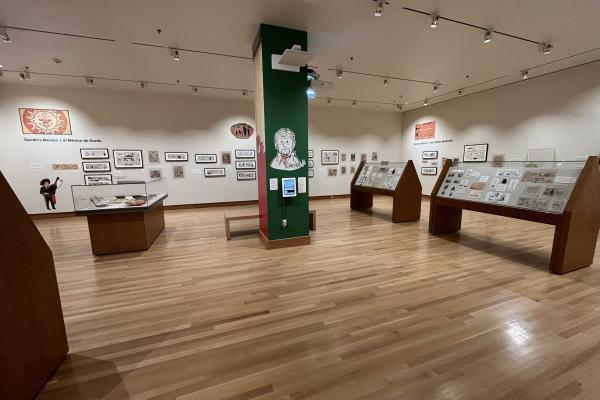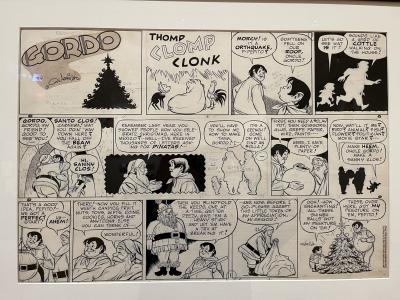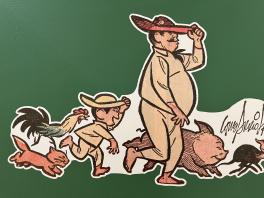Comic artist Gus Arriola’s “Gordo” retrospective highlights Mexican culture

Gus Arriola, an iconic Mexican-American comic book artist and writer, is having his 40-year run of comics shown at the Billy Ireland Comic Museum through May 2024 . The retrospective exhibit, titled “Depicting Mexico and Modernism”, highlights the development and importance of Arriola’s work.
On January 20, the Billy Ireland Cartoon Library & Museum celebrated the opening of the Gordo exhibit with a reception. The installation consists of animation by Bret Olsen and works on loan from Mark Bursetin, Jim Guida, Lala Alcaraz, Hector D CantuThe Ohio State University collections.
Curator Nhora Luccia Serrano led a guided tour that outlined the history and development of his work. After the tour, there was some time for independent viewing of the exhibit. Attendees could look at the comics with more depth, enjoying how each detail revealed a different aspect of his modernist comic strips.
The exhibit is organized into categories which depict Arriola's development as an artist throughout the years. It starts off by explaining his early homelife and context for the creation of his work. It then goes on to discuss the various characters, plot lines, Mexican cultural references and fan engagement over the years through his works, consumer products and inspirations.

Arriola began releasing his comics in 1941, an era suffering from the challenges and impacts of depression politics along with the beginning of World War II. His comics ran until 1985, with many historical events pertaining to Mexican-American relations taking place throughout this time. Arriola’s work explores the blatant discrimination and general outlook on Mexicans and Mexican-Americans at this time in history, as it is a guiding point for Arriola’s artistic journey and representation.
Originally, Arriola just wanted to explore something new and fun, with visually recognizable concepts of Mexicans he had grown up with. The strip featured a variety of characters, with the main one being Gordo Salazar Lopez. Gordo was initially a bean farmer, perpetuating and portraying a Mexican stereotype. After the realization that he was producing one of the only works portraying Mexicans and contributing to negative ideas surrounding Mexican culture and identity, Arriola began to reimagine the story and use his platform to more accurately portray Mexican life. He decided to depict his main character differently and use his platform to not only express himself and his heritage creatively but also to introduce American citizens to Mexican culture and folklore engagingly and humorously.
Arriola was able to incorporate many Mexican holidays into his strips such as All Saints Day, Day of the Dead and Three Kings Day. Along with this, he popularized many Spanish phrases such as “andale,” “hasta la vista,” and “amigo.”

The reception also included a panel run by Serrano, with speakers Hector Cantu and Frederick Luis Aldama. Cantu is a famous American writer and cartoonist, most well-known for “Baldo,” a work which focuses on the life of a 15-year-old Latin American teenager. He worked directly with Arriola in the early 2000s. An excerpt of “Baldo” can also be seen in the exhibit. Aldama, also known as Professor Latinx, is an award-winning author of over 40 books, including books on comics.
The two speakers shared their personal experiences with Arriola. They both spoke on his importance as an artist, along with his contribution to the humanization of Mexicans in an America full of stereotypes and discrimination. They discussed the use of stereotypes in pieces, and how they can be both beneficial and harmful. The panel ended with Cantu presenting a “Baldo” strip, detailing the references and allusions it contained.
Gus Arriola’s “Depicting Mexico and Modernism” will be showing until May 5, 2024.
